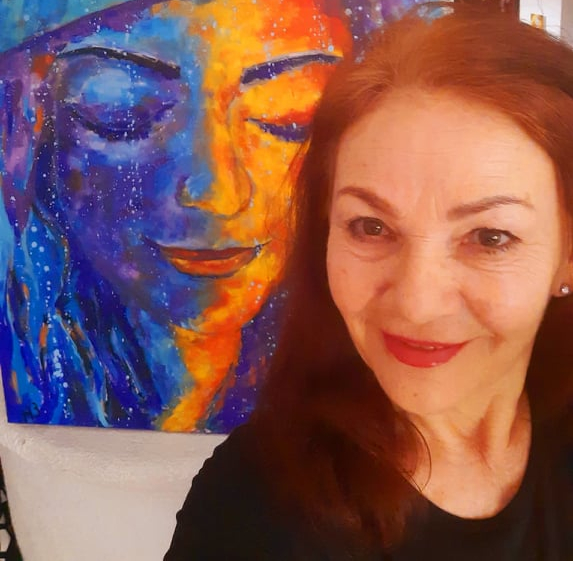 Emma Haase
Il cammino di questa brava artista di origini ungheresi ma cittadina austriaca ormai da molti anni, inizia subito deciso e spedito verso la conoscenza e l’approfondimento non solo di tecniche pittoriche a cui può attingere per dare vita a un suo personale linguaggio, bensì anche di un avvicinamento alle emozioni e alle riflessioni che avvolgono e permeano l’esistenza contemporanea. Dopo un percorso di studi che potrebbe essere definito esplorativo, si avvicina definitivamente all’arte nel 1998 quando comincia cioè a frequentare corsi tenuti dai migliori maestri austriaci e tedeschi, in virtù dei quali riesce a declinare il suo linguaggio espressivo in base alle emozioni che percepisce, alle sensazioni che desidera restino impresse sulla tela. Il suo cammino esplorativo si muove su due canali interpretativi, quello dell’unicità dell’uomo, la singolarità dell’essere umano che fuoriesce malgrado il suo bisogno di appartenenza a un gruppo, a una comunità, a un insieme di altri individui su cui fonda la sua stessa vita, e quello della bellezza ammaliante della natura e delle emozioni in tutte le loro forme; Realismo quando racconta delle interazioni tra persone, Espressionismo quando sente l’esigenza di esprimere emozioni più profonde, di un legame che si spinga più nell’intimo dell’individuo, ed Espressionismo Astratto quando invece si lascia coinvolgere dalla forza degli elementi naturali, dalla sua impetuosa bellezza, dalla sua rassicurante instabilità. Sembra quasi che Emma Haase voglia portare avanti nel suo percorso artistico tre lati della sua personalità senza che nessuno prevalga sull’altro, come se le sue tre anime sentissero la necessità di svelarsi, di volta in volta, all’osservatore. La gamma cromatica scelta è altrettanto in armonia con gli stati d’animo dei personaggi raffigurati, degli elementi della natura che la ispirano per iniziare a dipingere, ma anche del suo punto di vista sugli argomenti che con estrema delicatezza affronta, delicatezza che emerge malgrado uno stile pittorico di per sé di forte impatto, emozionale, come l’Espressionismo, perché ciò che conta, ciò che è importante, è il filtro, la lente poliedrica attraverso la quale la realtà e le sensazioni esterne vengono interpretate, oltre che percepite. Il suo girovagare per l’Austria, dopo il trasferimento dall’Ungheria, l’ha condotta in luoghi magici, come quelli tirolesi in cui vive, e altri decisamente più dinamici come la capitale, Vienna, e altre città verso cui si muove per promuovere la sua arte partecipando a mostre collettive internazionali, e questo contribuisce ad acuire la sua capacità di osservare la realtà intorno a sé, ascoltarne le vibrazioni e poi imprimere quanto assorbito su tela. Nell’opera Anwesend (Presente)
Emma Haase
Il cammino di questa brava artista di origini ungheresi ma cittadina austriaca ormai da molti anni, inizia subito deciso e spedito verso la conoscenza e l’approfondimento non solo di tecniche pittoriche a cui può attingere per dare vita a un suo personale linguaggio, bensì anche di un avvicinamento alle emozioni e alle riflessioni che avvolgono e permeano l’esistenza contemporanea. Dopo un percorso di studi che potrebbe essere definito esplorativo, si avvicina definitivamente all’arte nel 1998 quando comincia cioè a frequentare corsi tenuti dai migliori maestri austriaci e tedeschi, in virtù dei quali riesce a declinare il suo linguaggio espressivo in base alle emozioni che percepisce, alle sensazioni che desidera restino impresse sulla tela. Il suo cammino esplorativo si muove su due canali interpretativi, quello dell’unicità dell’uomo, la singolarità dell’essere umano che fuoriesce malgrado il suo bisogno di appartenenza a un gruppo, a una comunità, a un insieme di altri individui su cui fonda la sua stessa vita, e quello della bellezza ammaliante della natura e delle emozioni in tutte le loro forme; Realismo quando racconta delle interazioni tra persone, Espressionismo quando sente l’esigenza di esprimere emozioni più profonde, di un legame che si spinga più nell’intimo dell’individuo, ed Espressionismo Astratto quando invece si lascia coinvolgere dalla forza degli elementi naturali, dalla sua impetuosa bellezza, dalla sua rassicurante instabilità. Sembra quasi che Emma Haase voglia portare avanti nel suo percorso artistico tre lati della sua personalità senza che nessuno prevalga sull’altro, come se le sue tre anime sentissero la necessità di svelarsi, di volta in volta, all’osservatore. La gamma cromatica scelta è altrettanto in armonia con gli stati d’animo dei personaggi raffigurati, degli elementi della natura che la ispirano per iniziare a dipingere, ma anche del suo punto di vista sugli argomenti che con estrema delicatezza affronta, delicatezza che emerge malgrado uno stile pittorico di per sé di forte impatto, emozionale, come l’Espressionismo, perché ciò che conta, ciò che è importante, è il filtro, la lente poliedrica attraverso la quale la realtà e le sensazioni esterne vengono interpretate, oltre che percepite. Il suo girovagare per l’Austria, dopo il trasferimento dall’Ungheria, l’ha condotta in luoghi magici, come quelli tirolesi in cui vive, e altri decisamente più dinamici come la capitale, Vienna, e altre città verso cui si muove per promuovere la sua arte partecipando a mostre collettive internazionali, e questo contribuisce ad acuire la sua capacità di osservare la realtà intorno a sé, ascoltarne le vibrazioni e poi imprimere quanto assorbito su tela. Nell’opera Anwesend (Presente)
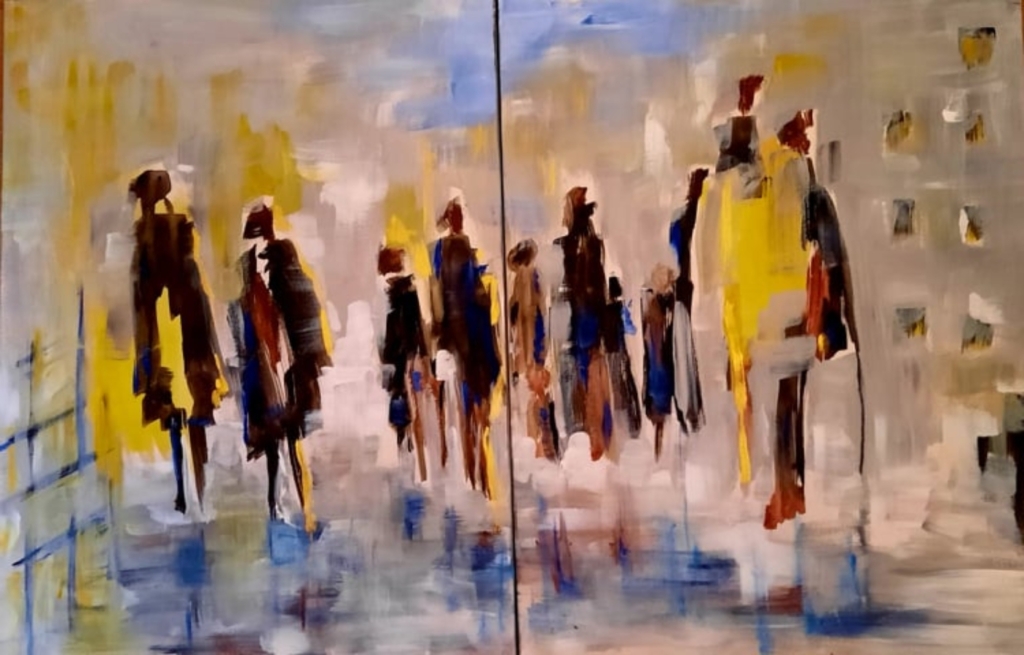
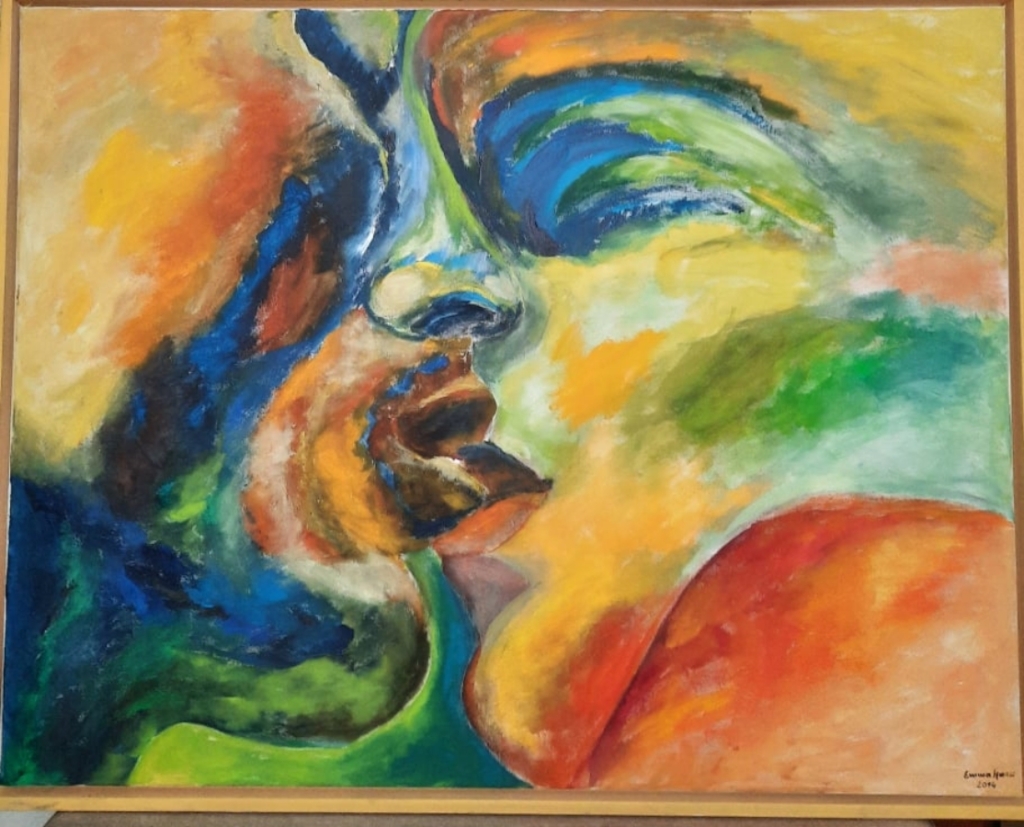
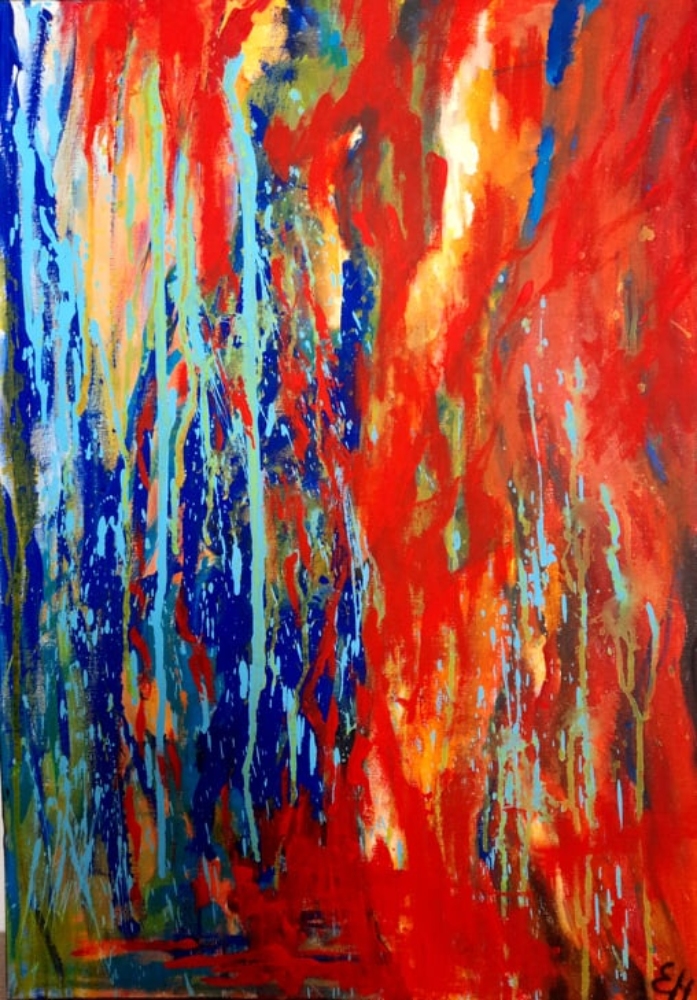
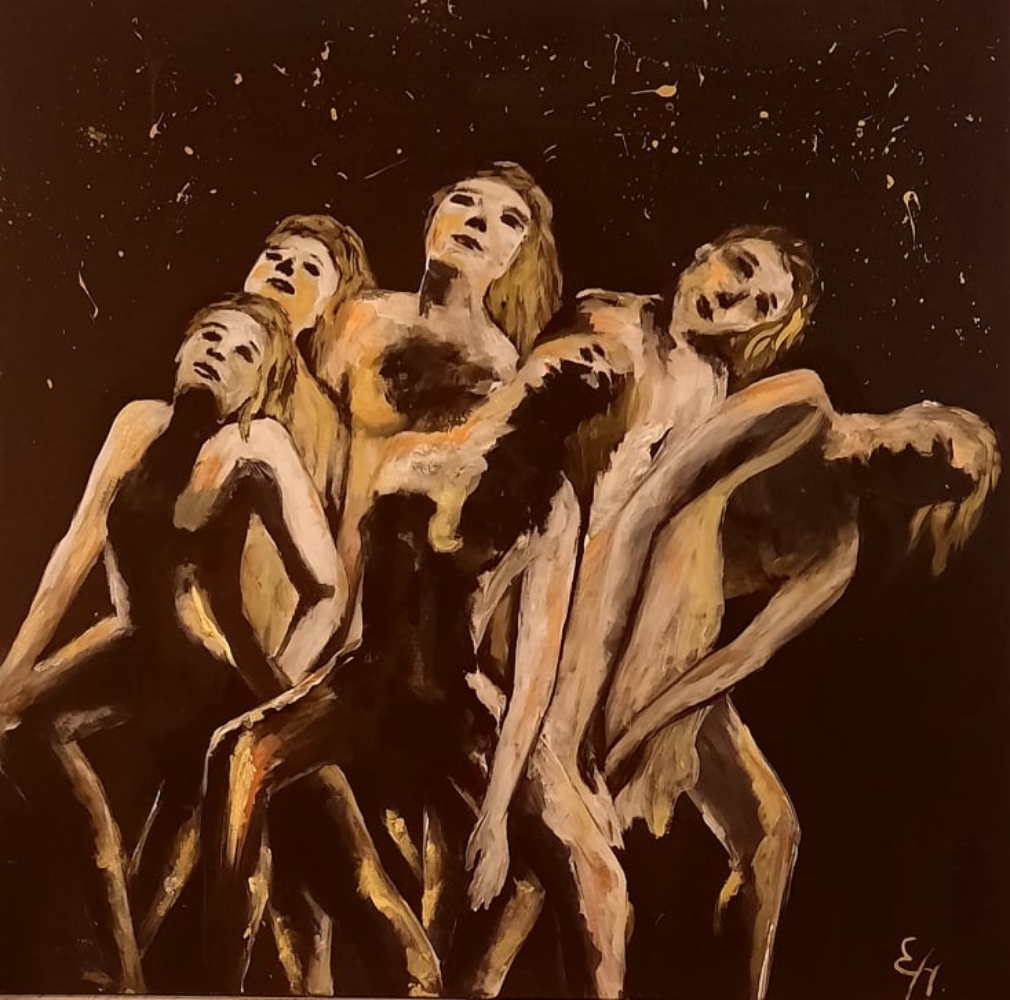
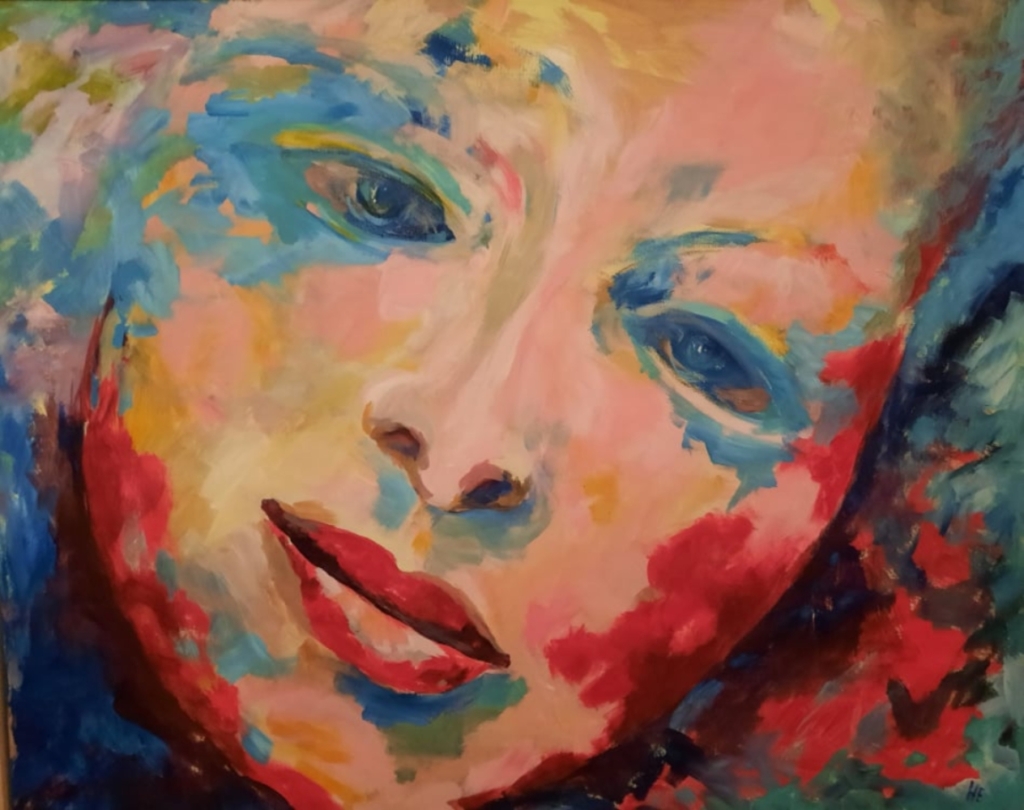
Marta Lock’s interviews:
Emma Haase, the need for stylistic freedom to preserve the capacity to choose
The path of this talented artist, originally from Hungary but now an Austrian citizen from many years, began immediately and decisively in the direction of knowledge and in-depth study not only of the painting techniques she can draw on to create her own personal language, but also of the emotions and reflections that envelop and permeate contemporary life. After a path of studies that could be defined as exploratory, she approached art definitively in 1998 when she began to attend courses held by the best Austrian and German masters, thanks to which she was able to decline her expressive language according to the emotions she perceived, the sensations she wanted to remain impressed on the canvas. Her path of exploration moves along two interpretative channels, that of the uniqueness of man, the singularity of the human being that emerges despite his need to belong to a group, to a community, to an ensamble of other individuals on which he bases his own life, and that of the bewitching beauty of nature and emotions in all their forms; Realism when she tells of the interactions between people, Expressionism when she feels the need to express deeper emotions, of a bond that goes deeper into the individual, and Abstract Expressionism when she lets herself be carried away by the force of the natural elements, by its impetuous beauty, by its reassuring instability. It almost seems as if Emma Haase wants to pursue three sides of her personality in her artistic career without one prevailing over the other, as if her three souls felt the need to reveal themselves to the observer each time. The range of colours chosen is also in harmony with the moods of the characters depicted, with the elements of nature that inspired her to start painting, but also with her point of view on the subjects she tackles with extreme delicacy, a delicacy that emerges despite a painting style that is in itself of strong emotional impact, such as Expressionism, because what counts, what is important, is the filter, the multifaceted lens through which reality and external sensations are interpreted, as well as perceived. Her wandering around Austria, after moving from Hungary, has taken her to magical places, such as the Tyrolean onesa where she lives, and other decidedly more dynamic ones such as the capital, Vienna, and other cities to which she moves to promote her art by participating in international group exhibitions, and this contributes to sharpening her ability to observe the reality around her, listen to its vibrations and then impress what she has absorbed on canvas. In the artwork Anwesend (Present) Emma Haase recounts the everyday life of the contemporary era, that encounter with people, individuals, whose faces we know perfectly but of whom we know nothing, and so her Expressionism does not define the characters on the canvas but rather blurs them, confuses them, making them part of the multitude, as if in that indefinite meeting there were a reassurance, the illusion of being less alone. And again in Kuss (Kiss) the colours are not those traditionally associated with passionate love, the scale of reds, but rather the yellow of the brightness of a feeling capable of changing the view of life, the green of the freshness and tenderness that emanates from the two faces completely transported by the emotion they are feeling, the blue of the dream, of the romanticism that envelops their thoughts. But let’s find out more about this particular Hungarian artist. Emma, you have chosen stylistic freedom. Can you tell us about the artistic path that led you to decide to keep different expressive paths open? Stylistic freedom is close to my heart because my attitude towards the world has always been that of openness and observation, and also because my lively interest in all directions of art has been evident since I was a child. In primary school, I was inspired by the artist-teacher Füleki Gabor, and in high school I was further intrigued and stimulated by the study of art history, during which I was fascinated by impressionist paintings. I then went on to perfecting my style with Leitner Sandor. How much did your life experience, your constant moving around to study, to show your artwork and to interact with other artists count in the multifaceted nature that inevitably distinguishes you? What led you to leave your country and what led you to choose Austria? It was my destiny to leave my home country, my nature has always made me want to move around and my love for painting led me to settle in Austria, where you can breathe art at every corner; I then started to attend many training courses both in Austria and Germany. The masters you studied with had different painting styles and approaches, with whom did you get along better and from whom do you feel you took more? Which one do you feel closest to in terms of artistic vision and from which one, despite being distant, did you learn fundamental notions that you keep and imprint in your art? As in the past, it is essential for artists to move from one country to another, to gain experience, to compare notes, which is why I considered it essential for my art to follow the same path, just as it was important to experiment with different styles and learn different techniques, spending several years studying icon painting with Abbot Otto Strommaier. Then I studied with St Lambrecht Volge with whom I did an exhibition in a monastery in Mariawaldras. In Germany, I fell in love with the works of Christoph Rehlinghaus, whose exhibition I saw in Neuss. Are there any masters from the past who inspire you? Or someone you feel particularly close to? I am a great admirer of the Austrian artist Voka Style, whose use of colour fascinates me, as well as the Tyrolean painter Ernst Tribuleun, whose style influenced me greatly. And then the artist John Walton from Aldrans who was my teacher. What are the next projects? The lockdown period, which is still going on, makes it very difficult to participate in exhibitions, both in my home country of Austria and abroad, so for the time I am creating new artworks to be shown in the near future, when all this is over. I plan to continue participating in group exhibitions, but also to organise a solo exhibition.